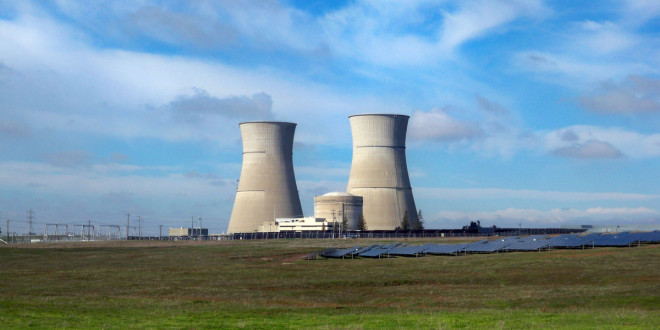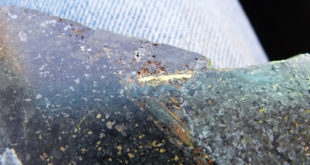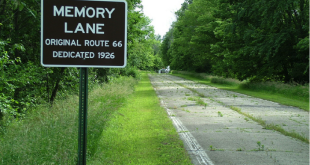“There are no easy choices. Easy choices are long gone.”
Alan Greenspan, on the Deficit 03/11/05
We have seen a considerable number of new junior companies created in the last year to take advantage of the resurgence in uranium and nuclear interest. But will these new juniors significantly add to the world portfolio of producing uranium mines? One commentator has referred to them as the “ambulance chasers” of the mining industry. Junior mining has always chased trends and now is no different from several years ago when the investment world (re)discovered gold, or earlier still when it discovered platinum and palladium. It’s impossible for a start-up to attract funds without an audience so, curmudgeons – please keep quiet and let this market have its first fun in 2 decades.
There is an excellent discussion: Recent Uranium Industry Developments, Exploration, Mining, and Environmental Programs in the U.S. and Overseas by the Uranium Committee, Energy Minerals Division of the American Assoc. of Petroleum Geologists. This is a must read if you are interested in uranium, and though this is written by geologists don’t let that turn you off; it is a very accessible and clear document. It is fairly current too, written in March, 2005, but before our recent gas price shock. http://emd.aapg.org/technical_areas/uranium.cfm P.S. The paper written under “Energy Economics” is a real zinger too.
The biggest elements driving the uranium price are the looming exhaustion of stockpiles and the deepening of the deficit supply-demand situation. Nuclear energy generators have been feeding off liquidated government stockpiles or decommissioned Cold War era munitions and warheads since demand exceeded mine supply in 1985. This “old” stockpiled uranium represents the off take of probably hundreds of different mining operations scattered across the globe, almost all of which are now closed. So, that production from circa 40 years of mining activity is now being rapidly consumed, and a bear market of 20 years duration meant that little mine-finding activity has gone on to replace those resources. Now we find ourselves in a time when even the Greenies are embracing nuclear energy and countries are rushing to build new nuclear power plants, and demand for uranium is forecasted to….um… explode.
In this essay I want to address the question, “Where is the uranium to fuel our society going to come from? In the short term, medium term and longer term?” More specifically, are the areas that have historically produced uranium going to continue to yield new discoveries?
Adding to mine supply in a meaningful way:
Here let’s make some assumptions:
- that those various countries with nuclear arms (known as WMD’s by speechwriters) are not going to “turn swords into plowshares” and dismantle all their nuclear weapon stocks for peaceful energy purposes
- that the change in tails assay is not going to solve future demand problems: see
http://www.uxc.com/cover-stories/uxw_19-41-cover.html
Then the main source of uranium feed for the energy industry will have to come from new mine supply.
Any forecast of where future uranium prices are headed should take into account the likelihood supply deficits can be made up by development of uranium mine reserves in a meaningful timeframe; say 5, 10 or 20 years outboard. I don’t just mean what is on the industry books as a reserve, but what can be mined in real world situations. Can the industry play catch-up or is the shortfall just going to get larger? When prices for a commodity are bid up, it becomes less risky to explore for that commodity because the chances increase that what you may find could be economic to mine. When only the highest grade deposits are profitable there is little reason to explore because your chances of encountering very high grades are small. In normal circumstances, equilibrium is eventually reached and more mines are brought on line to satisfy demand – eventually the metal price declines due to oversupply. However, if there is significant industry-scale disruption or delay in the mine explore-and-develop cycle then there can be serious and unanticipated supply shortfalls. Currently, disruption is affecting the gold explore/develop cycle – a lack of discovery of any world class multi-million ounce deposit in the current cycle has meant that in order to secure gold reserve ounces the senior companies have no choice but to merge or swallow their competitors – and we see that today in the Barrick bid for Placer Dome. But what does the uranium industry do to secure supply? How quickly can the industry provide new deposits?
What immediately became (disquietingly) apparent while preparing this review is that many of the mines and areas that yielded the US and Soviet cold war era stockpiles of uranium are now depleted and reclaimed and unavailable to further exploitation. Other areas have become lightning rods to opposition groups and have effectively gone out of play due to continual legal challenges and governmental bans on the local or state level. Still other large parts of the globe are closed to exploration companies, and left to state surveys and government enterprises of dubious efficiency to supply their country’s future requirements. The situation frankly does not look good. With a large number of new nuclear power plants in construction or on the drawing board it looks likely that energy suppliers will be competing for dwindling uranium supplies. Unless new frontier areas open up, new robust deposits are found, and governments fast track the permitting process for new mines, we are bound to see shortages.
Not where should you explore, where are you allowed to explore?
For exploration success, great geology is one thing. Surety of title is a second thing, and actual physical access to the ground is a third. If you are an exploration manager of a uranium company wishing to find new frontier areas to explore you will find the globe a smaller place than you initially thought. There are many countries of the world that have bans on exploration and/or exploitation of uranium. This is due to the obvious geopolitical implications of having a uranium deposit within your borders. Tiny Costa Rica is one of them (frankly it is not particularly prospective anyway). In many other countries all radioactive minerals are reserved for the State. For instance, Brazil’s federal constitution makes nuclear minerals a “monopoly of the state”. In China, radioactive minerals are “prohibited from foreign investment”. In Mexico, uranium extraction and processing are the “sole prerogative of the state government monopoly”. In India, the Atomic Energy Act specifies that persons finding uranium or thorium “shall, within three months after the date of commencement of this Act or after the discovery, whichever is later, report the discovery in writing to the Central Government or to any person or authority authorised by the Central Government in this behalf”, – and in typical Indian bureaucratic form, the Central Government may then determine whether to allow mining – “or totally prohibit him from conducting the mining or rations or treating or concentrating the substance aforesaid”. Not exactly encouraging is it? Rule India out too.
So, many countries have their own domestic uranium mines or exploration programmes. Does this then mean that they won’t have to tap the global market for their uranium needs? India and China have both announced highly ambitious nuclear energy projects for the next 20 years. India has said that all uranium from Indian mines will be reserved for domestic use. All well and good, but will it be enough?
http://www.theage.com.au/news/national/india-may-seek-uraniumdeal/2005/10/20/1129775901934.html
Then comes this:
http://www.abc.net.au/am/content/2005/s1483665.htm
http://www.miningweekly.co.za/min/news/today/?show=76809
It seems that both China and India want to make agreements with uranium producer countries to take some of that yellowcake. What this means is that in spite of reserving their country’s resources for their own use their internal uranium mining industries simply won’t find enough of the stuff to satisfy domestic demand.
As explained above, large areas of the world are closed to uranium exploration by junior and senior companies. The rest of world though does not exactly have an open door uranium policy. Legacy areas in Europe are particularly touchy places to carry out uranium exploration or mining and it is pretty safe to say that Europe is now effectively off limits. These are places where uranium mining may have been carried out 40 or 50 years ago – say by the Soviets, or even earlier in the 19th century for uranium to colour ceramic glazes. Though much mining was done responsibly, in an age when there was little environmental conscience, often no particular care was paid to tailings dumps or rainwater runoff and these legacy areas have attracted attention from non-governmental organizations (NGOs) and those with an agenda to push liability issues. Great strides have been made in the reclamation of numerous mining sites, but it is highly doubtful that these sites will be ever opened up again, no matter what the uranium price. In the former East Germany, a massive effort has been underway in the cantons of Thuringia and Saxony to decommission 5 mines and 2 mills. East Germany was, until reunification in 1990, the third-ranking uranium producer, after Canada and the USA. In France, uranium was discovered in 1948 and mined initially for armaments, and later for France’s ambitious programme of domestic energy generation. The last mine closed in 2001 and all of the sites have now been reclaimed. There is currently only one uranium mine left in the entire European Union, and that is Rozná in the Czech Republic. Plans to close Rozná have been announced several times, but it continues to operate because it is profitable and contributes to the local economy.
Mine Development is Never Smooth Sailing:
The USA has its legacy issues as well. We all know the awful stories of US soldiers being ordered to observe above-ground nuclear tests. Many however don’t know that uranium miners in the good old days were also occasionally and unnecessarily exposed to radiation in uranium mining.
http://www.usdoj.gov/civil/torts/const/reca/about.htm
The Federal Radiation Exposure Compensation Act, passed by Congress in 1990 provides for the payment of $100,000 to uranium miners who worked in US mines between 1942-1971 and meet exposure threshold criteria. Areas of the country with closed uranium mines and a concentration of compensation claimants still living locally can be difficult places for mining companies to do business today. Take the case of the Four Corners area in the USA, where the states of Utah, Arizona, Colorado and New Mexico come together. This is also an area containing numerous roll-front uranium deposits and it produced the uranium for the Manhattan Project. It is also the location of the 27,000 square mile Navajo Nation.
http://www.lapahie.com/Navajo_Map_Sh.cfm
Back in April of this year the Navajo Nation Council passed a resolution banning uranium mining. The Navajo tribe has been one of the main lobby groups against uranium mining in the western USA.
http://www.msnbc.msn.com/id/7602821/
Nation President Joe Shirley Jr. signed the Dine Natural Resources Protection Act of 2005 which states that “no person shall engage in uranium mining and processing on any sites within Navajo Indian country”. I don’t know what the legality of the Act is or if it has any teeth in court, but companies actively exploring or planning to produce in this area are clearly in for a fight. Such legacy situations – usually no fault of the current mining and exploration folks in the area – can adversely affect exploration plans or mine development. With sufficient clout to influence government on the municipal, state or federal level, special interest groups and NGOs can tie a company’s hands for years. There are a number of junior exploration plays in the western USA. As an exercise, do some research, pull out some maps and determine if the company you have invested in has their properties within the Navajo Nation.
You can’t flip a switch and go back into production
When looking for gold deposits, we geologists often say the best place to look is within sight of an existing headframe. This is because gold deposits often cluster together. But in the case of uranium, looking in the vicinity of old mines, particularly those worked in the 1940’s, could backfire on you. Along those lines, if your investment darling has picked up an old mine with the idea to revamp it and put it back into production be particularly careful to find out if it is “inactive” and on “care and maintenance” or if it is under a “mine closure order” and “reclaimed”. Reclaimed mines usually have had all the infrastructure (e.g. access roads, electric power lines, water lines and mine buildings) taken away and it may not be economically feasible to put it all back for what may be left in terms of unmined reserves. Such mines might indeed be restarted after a dedicated exploration and drilling campaign, but are best treated by the investor as only a bit better than grassroots plays, unless there is substantial environmental liability still left around and then they should be shunned.
The best places to explore are altogether away from population centres and potential people issues. The central and northern part of Australia, northern Saskatchewan, Kazahkstan, Namibia, and Mongolia are to my mind excellent areas for exploration because of their low population densities. They also have histories of good to exceptional uranium mines. Kazahkstan however is a country with a recent history of moving the mining goal posts when it suits them and it has some maturing to do before it becomes truly friendly to foreign mining investment. The jury is still out in Mongolia, but the government seems to be realizing that minerals are the only real assets that can attract foreign investment (other than perhaps gers http://www.samarmagictours.com/en_ata.htm). Some tinkering with the mining law may be in the offing, in the form of new time limits on holding exploration concessions. Currently, companies can hold on to rights as long as they wish, as long as they pay the requisite fees. Opportunities in both Kazakhstan and Mongolia exist by virtue of the collapse of the Soviet Union. The Russians pulled all their technology out when they decamped but in most cases the mines were far from exhausted.
The Aussie Experience: You can mine uranium.
Wait, no you can’t. Well, maybe. Australia has had an uneven history of permitting companies to mine uranium and still has a “three mines” policy in place, though permitting of Southern Cross’ Honeymoon deposit effectively breaks the federal government’s own rules. There are today three operating mines: Ranger, Olympic Dam, and Beverly.
Arguably the best area for exploration is on the fringes of the McArthur Basin in the Northern Territory (NT) and adjacent Queensland. It is the area that historically has seen the most activity. In the NT the most important area is termed the “South Alligator Uranium Field”. Prospecting in the area began in the late 1940’s and by the ‘50’s there were 13 mines and 15 small open cuts (prospects) supplying uranium to both the US Atomic Energy Commission and the UK Atomic Energy Authority. This early phase of mining ceased by about 1964. Contemporary accounts from those uranium boom years make it sound like something out of the Wild West, and, unfortunately the slash and dash mentality that was current at the time left some fairly formidable environmental messes behind. This area of the Northern Territory is also incredibly scenic, with red rock mesas and canyons, huge flocks of migratory birds and culturally important Aboriginal rock paintings, and, as people became more aware of environmental issues through the 1960’s and 1970’s a decision was taken to protect it. Kakadu National Park which encompasses much of the area was declared in several stages, commencing in 1979. Though some of the important uranium deposits such as Coronation Hill, already drilled off and mined for a small period of time, were permanently taken out of play by the park (the hill is a sacred site to local Aboriginal peoples) other areas were grandfathered and not included in the park, though it surrounds them. The only currently operating mine in the area is Ranger. This has been in operation for over 20 years now, and continues to be mined by Energy Resources of Australia Ltd, in the RTZ stable of companies. As of February, 2005, ERA has an agreement with local Aboriginal groups and the Northern Land Council not to mine the adjacent Jabiluka orebody without Aboriginal approval. The access decline into the orebody was voluntarily backfilled by the company in 2003. Jabiluka remains in limbo until whatever cooperative agreement can be reached. The French company Cogema has wanted to mine the Koongarra deposit, but as of May, 2005 the NT government has said no to mining due to the proximity of Nourlangie Rock; an area of rock paintings and an important scenic point in the park. It was announced on August 4th of this year that the Australian Federal Government has taken the future of the Northern Territory’s uranium assets out of the hands of the territorial government who had vowed to ban all new uranium mines.http://www.theage.com.au/news/National/Govtseizes-control-of-NT-uranium-mines/2005/08/04/1123125836681.html Kakadu is a UNESCO world heritage site, and exploration and mining will continue to be a contentious issue both within and adjacent to the park.
The other side of the McArthur Basin in Queensland is very prospective for uranium and has some reserves in past producers drilled off. Unfortunately, the Queensland Government refuses to issue mining leases over uranium deposits, having apparently caved into pressure from the coal lobby which views any nuclear power option as undesired competition. The Queensland Resources Council http://www.qrc.org.au/_dbase_upl/Uranium%20policy.pdf and the Australian Workers Union http://www.atimes.com/atimes/China/GI28Ad01.html have come out in favour of uranium mining and are working towards reversing the 1998 ban. In Western Australia there are several known uranium deposits that could be commercial, but here again, the State government has banned the mining of uranium, in this case since 2002. John Howard, Australia’s Prime Minister supports uranium mining http://www.abc.net.au/pm/content/2005/s1472360.htm, and apparently so does the opposition federal Labour Party, but with reservations. The situation seems to be quite fluid. We could see rapid developments in Australia but you may want to hold your bets until the laws change.
The Canadian Experience: Getting it done, but hard work
In Canada, uranium mining has been carried on since the 1940’s. Mining really took off with the discovery of the Elliott Lake – Blind River uranium field. For a highly entertaining read I suggest Franc Joubin’s Not For Gold Alone: The Memoirs of a Prospector (now, sadly out of print). Franc now wields his geo-prospecting hammer in heaven, but he was a great old guy, and I was fortunate enough to meet him and even have my copy of his book autographed. Later in his career – largely for fun I think – Franc worked as an advisor to the United Nations. While I was at the University of Toronto he would occasionally blow in unannounced from some corner of the globe. On one occasion he decided to endow a series of geology lectures and fund the travel costs of various speakers. He sent a cheque for a huge sum to the Geology Department without a covering letter or any explanation. After many phone calls he was tracked to Botswana and his intentions for the money divined.
Dr. Joubin discovered the uranium field using a geological hunch, and in a monumentally and meticulously arranged programme involving hundreds of men scattered in different towns and cities, secret instructions, and train tickets in sealed envelopes, rendezvoused them at various spots along the geological formation he called the “Big Z” . Franc’s syndicate managed to grab all the ground, except for a small piece staked by others when word leaked out (that small piece serendipitously became the Quirke Lake mine). Joubin and promoter Joe Hirshhorn became fabulously wealthy, with a syndicate portfolio worth $250 million before cashing out to Rio Tinto. When Hirshhorn died he left his extensive art collection to fill a new museum bearing his name, on the Mall in Washington D.C. It’s now part of the Smithsonian. His estate also partially funded my graduate studies, for which I am eternally grateful.
Mining at Elliot Lake began in 1955 with 135,450 tonnes of uranium metal being produced to end of 1989 with average grade of 0.09 per cent from 12 deposits. Limited production continued to 1996. In 1977, electricity power producer Ontario Hydro locked in 30 year contracts to secure uranium at $35 per lb. The price of uranium of course tumbled in later years and the contracts became an embarrassment to the provincial government. Ending this commitment was only possible with the dismantling of the utility itself. After its tax base had in all essence fallen away, Elliot Lake was in danger of becoming a ghost town. In 2001, a special Act was passed in the Ontario Legislature to allow the town to expand residential communities on to Crown Land. The town was then intensively marketed as a retirement community – the “Jewel in the Wilderness”, and as part of that rejuvenation programme the old shafts were capped and former mine and mill sites revegetated. A look at the official Elliot Lake website http://www.cityofelliotlake.com is long on tourism and retirement and short on mining, except for a small section on town history, and clearly today marketing is not directed towards the mining community. In any case, most of the remaining reserves are deep, below the 4000 ft level. There are several juniors who have staked or acquired mining claims in the area, however ideas to restart a mining industry here may be unrealistic.
The Athabasca Basin in Saskatchewan is the premier uranium mining address in Canada, if not the world. The richest and most lucrative deposits are presently being found there, and a very large percentage of the basin is now staked. The most prospective fringes are all taken up. I am saving a description of the basin for elsewhere; I just want to make some comments about mining challenges and mining methods.
The 1950’s first phase discoveries such as Beaverlodge and Uranium City were mostly made in the basement rocks that surround the basin itself. As exploration moved into the sedimentary basin, guided by geophysics and good recognition of the geological controls on mineralization, larger and higher grade deposits were found. Now exploration managers throw a battery of geological, geophysical and geochemical exploration techniques at deeper parts of the basin, and are being rewarded. UEX Corporation is joint ventured with producer Cogema Resources Inc. at Shea Creek and recently announced a drill hole with 5.40% U3O8 over 37.7 metres, including 25.46% U3O8 over 4.0 metres. These are exceptional grades and widths. The McArthur River Mine and the Cigar Lake Mine (in pre-production) have portions of their orebodies worth more than $10,000 per tonne – that’s equivalent to over 20 gold oz/ton rock – real bonanza grade!
Such high grades however present atypical mining challenges. Some of these challenges are outlined in “McArthur River Project, Saskatchewan, Canada, by G.D. Pollock” http://www-pub.iaea.org/MTCD/publications/PDF/te_1258_prn.pdf. The two major problems are high radioactivity, which necessitate minimizing exposure to the miners through remote mining techniques, and the water saturated sandstone enclosing the ore which is poorly consolidated (meaning it is porous and crumbles easily). These conditions rule out conventional underground blast-and-muck stoping techniques. In both mines the sandstone is consolidated by freezing it underground. This is a technique used in a few potash mines, but it’s not common and adds to the costs of mining. Radon gas is a radioactive product of natural uranium decay and is soluble in water, particularly under pressure. When pressure is released such as where water seeps into mine openings, the radon can come out of solution, and because it is heavier than air it will tend to accumulate in open workings and become dangerous to miners. Freezing the rock and isolating open mine areas mitigates this problem. Miners obviously have to monitor their radiation exposure, and mine ventilation is important. At McArthur River, mining is done by raise bore – essentially a directional large diameter coring technique done with a large drilling machine. At Cigar Lake, jet boring – opening cavities with high pressure jets of water is the selected method http://www.cri.ca/uranium/cigarlake.html The only other time I have encountered this technique was at the Lomonosov kimberlite diamond mine in the Archangelsk district of Russia. The geologists on my fieldtrip were intrigued by the method and figured it was something only possible under the Soviet system where mining costs were not an important consideration. In April 2003, a rockfall in a development area 510 metres underground at McArthur River caused a rapid increase in water flowing into the mine. The problems was controlled and rectified but caused significant losses in production. According to Pollock’s paper, McArthur River was planned at only 125 tonnes per day to produce a target of 18 million lbs/yr output. Cigar Lake is projected to have a 20-30 year mine life. These sound like great projections and they are, but 125 tonnes by industry standards is a miniscule amount. The cautious mining necessitated here needs to be highly choreographed, planned many years in advance, and can’t be rapidly ramped up.
A very hot and sooty future?
So, in summary, we can see that plenty of the historic uranium mining areas worldwide are now mined out, reclaimed – in essence out of play. The current active areas of the world such as the Northern Territory of Australia or the Athabasca Basin of Canada have their own problems such as permitting issues, and water incursions. Suffice it to say, the uranium supply situation from existing and new mines is – practically speaking – pretty inelastic. Because of the large lead times needed to get a mine – any mine – financed, permitted, and up and running, the chances are excellent that we will see a supply crunch scenario, no matter what the uranium price does. If the World is serious about alternatives to coal-fired generation of electricity it needs to get focused on finding the next generation uranium mines and removing the various hurdles to mine development. The alternative is a very hot and sooty future.
I gathered so much material on uranium that it has spilled over into a Part Three! But you won’t have to wait months for it – I’ve already written it. Right – let’s have it then! I hear you say. I’ll be sending it out on the wires in a week or two.
 Straight Talk On Mining Insights on mining from economic geologist Dr. Keith Barron.
Straight Talk On Mining Insights on mining from economic geologist Dr. Keith Barron.




